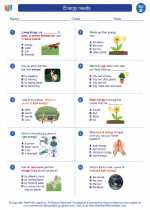Mesozoic Era
The Mesozoic Era is a major division of geological time that occurred from about 252 to 66 million years ago. It is often referred to as the "Age of Dinosaurs" due to the dominance of these reptiles during this period.
Periods of the Mesozoic Era
The Mesozoic Era is divided into three periods: the Triassic, Jurassic, and Cretaceous periods.
Triassic Period
The Triassic period lasted from about 252 to 201 million years ago. During this time, the first dinosaurs and mammals appeared, and the supercontinent Pangaea began to break apart.
Jurassic Period
The Jurassic period occurred from approximately 201 to 145 million years ago. It is known for the dominance of dinosaurs and the diversification of plant life, including the evolution of coniferous trees and ferns.
Cretaceous Period
The Cretaceous period spanned from around 145 to 66 million years ago. This period saw the emergence of flowering plants, as well as the continued dominance of dinosaurs until their extinction at the end of the period.
Key Events and Features
- Evolution of dinosaurs and mammals
- Breakup of Pangaea
- Diversification of plant life
- Rise of flowering plants
- Extinction of dinosaurs at the end of the Cretaceous period
Study Tips
When studying the Mesozoic Era, it's important to focus on the key events and features of each period, as well as the major evolutionary developments that took place during this time. Additionally, familiarizing yourself with the types of plants and animals that existed during the Mesozoic Era can help deepen your understanding of this fascinating period in Earth's history.
[Mesozoic] Related Worksheets and Study Guides:
.◂Science Worksheets and Study Guides Second Grade. Energy needs

 Worksheet/Answer key
Worksheet/Answer key
 Worksheet/Answer key
Worksheet/Answer key
 Worksheet/Answer key
Worksheet/Answer key
